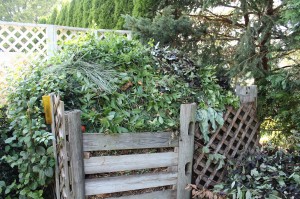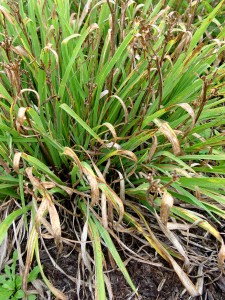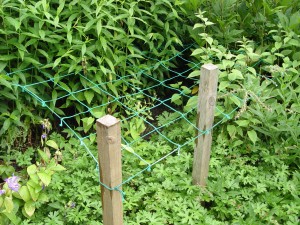My Compost Runneth Over
August 6th, 2013
My compost pile is piled to overflowing after a weekend of mid-summer trimming in the abnormally glorious weather.
Mid-70s, low humidity and a pleasant breeze in a central-Pa. August? What gives here?
The conditions were perfect for a host of neatnik jobs that are fairly important for keeping the landscape looking good down the fall home stretch.
Here are a dozen things I did (and why) that might help you whip your own yard into shape as summer winds down:
1.) Trimmed the yews, arborvitae, hollies and boxwoods. Evergreens are all but done growing, so a late-summer trim keeps them neat through next spring. Now’s the time to do it – not fall. And don’t cut so far back that you’re back into the bare wood.
2.) Trimmed the spireas, sweetspires and ninebarks and deadheaded the roses and butterfly bush. That gets rid of the spent flowers, controls size and corrects floppy growth that’s over my tolerance line. In the case of butterfly bush, deadheading prevents unwanted seeding (all but one of mine are sterile).
3.) Deadheaded the coneflowers, salvia, yarrow, shasta daisies and other bloomed-out perennials. I also picked the browned flower stalks out of the coralbells, daylilies and creeping sedum. This gets rid of the tired brown stuff in the garden, and in some cases, encourages a second round of flowering. I cut down on the stems far enough to make the remaining foliage compact – including nearly to the ground for yarrow and catmint.
4.) Picked the dead, diseased and browning foliage off the daylilies and iris. Both of these usually get fungal leaf spotting and streaking by mid-summer. Brown foliage does the plant no good anyway. Removal neatens the garden and encourages fresh new foliage to grow later in summer and fall.
5.) Snipped the excess growth off the potted plants. Some annuals get too big or dominant in pots and need a cutback or two in season to keep everything in balance.
6.) Cut off the dormant plants. Bleeding hearts, alliums, larkspur and to some degree, lilies, die back all or partly after blooming. Anything that’s brown can go.
7.) Tied up a few floppers. I try to get supports in place in spring around tall perennials that I know will flop without them, but I always under-estimate a few and forget others. Corralling asters, helianthus, goldenrod and such with stakes and jute now doesn’t look nearly as good as pre-emptive supporting, but it’s better than having plants sprawling all over the ground and each other.
8.) Snipped off low-hanging tree branches. Anything that whacks my head when I walk by or mow under is too low. Those hangers got “limbed up,” and while I was at it, I shortened a few overly long tree branches to balance out the canopy (at least ones I could reach).
9.) Yanked weeds. That helps any time and makes more of a neatening difference than anything. Plus it keeps weeds from going to seed and causing future trouble.
10.) Edged. Other than weeding, cutting fresh bed edges gives more return for the effort than any other job. I do it maybe two or three times a year – once in late winter with a long-handled ice chopper to cut a lip that’ll keep mulch from straying on the grass and about twice in season with a string trimmer.
11.) Yanked junk grasses and stray weeds in the lawn. I don’t do weed-and-feeds but instead keep weeds out of the lawn by overseeding each fall or two to keep the lawn thick and by policing with a screwdriver to dig invaders before they have a chance to spread. Back when my kids were little, I paid them a nickel a weed and still came in at less cost than a bottle of Trimec.
12.) Fertilized the annual-flower beds, pots and vegetable garden. These are all primarily annuals and thus heavy feeders. A mid-summer feed and a good soaking perks them up nicely.










